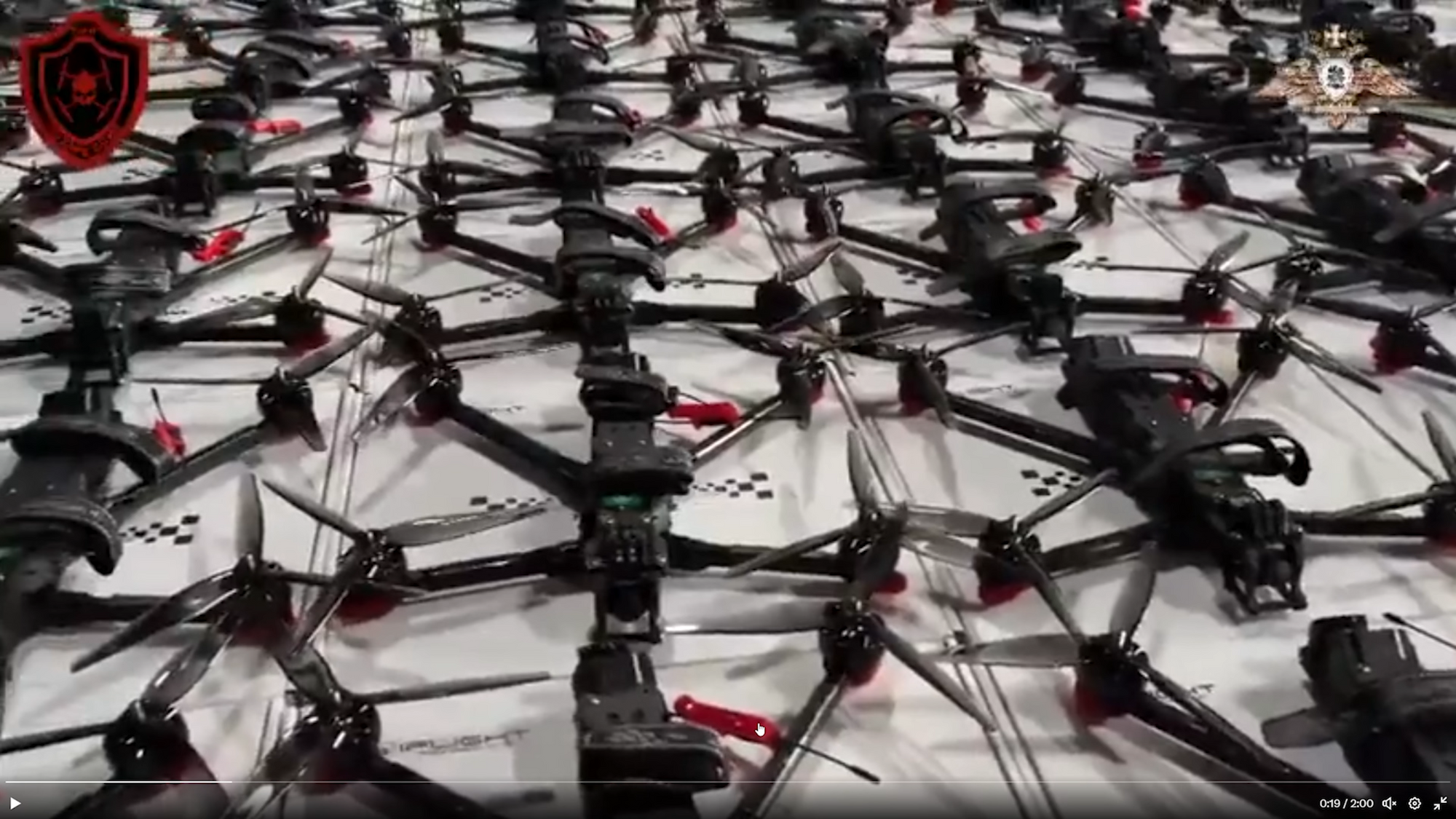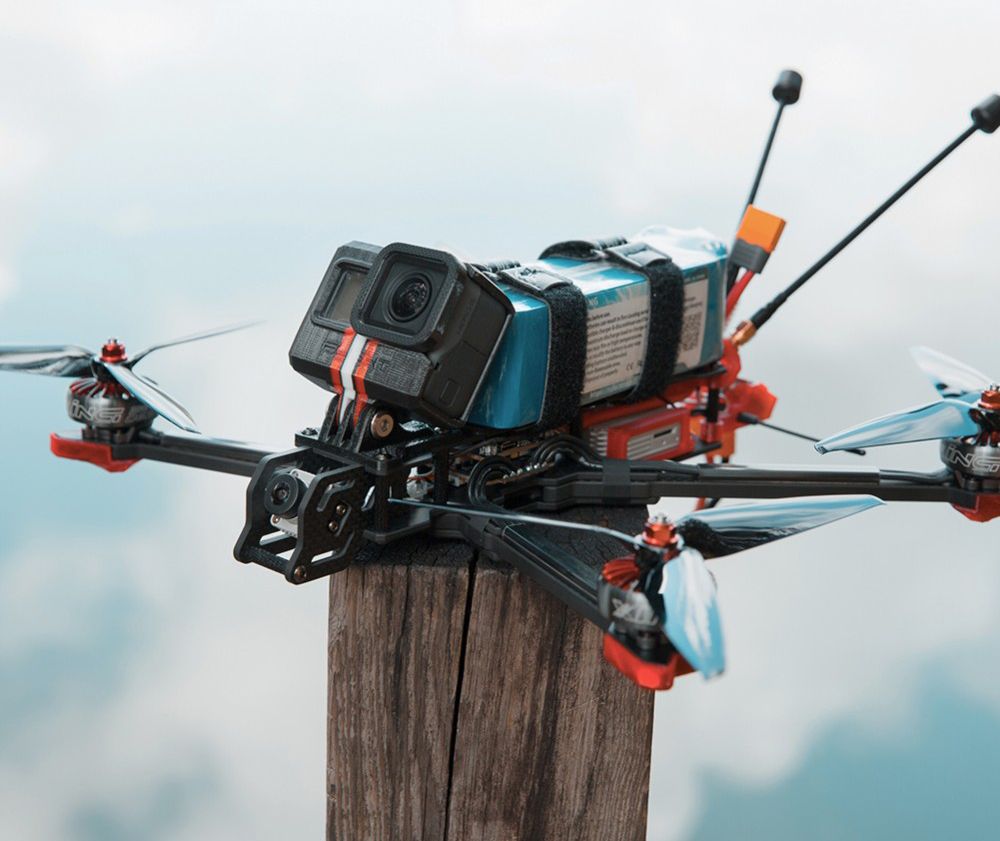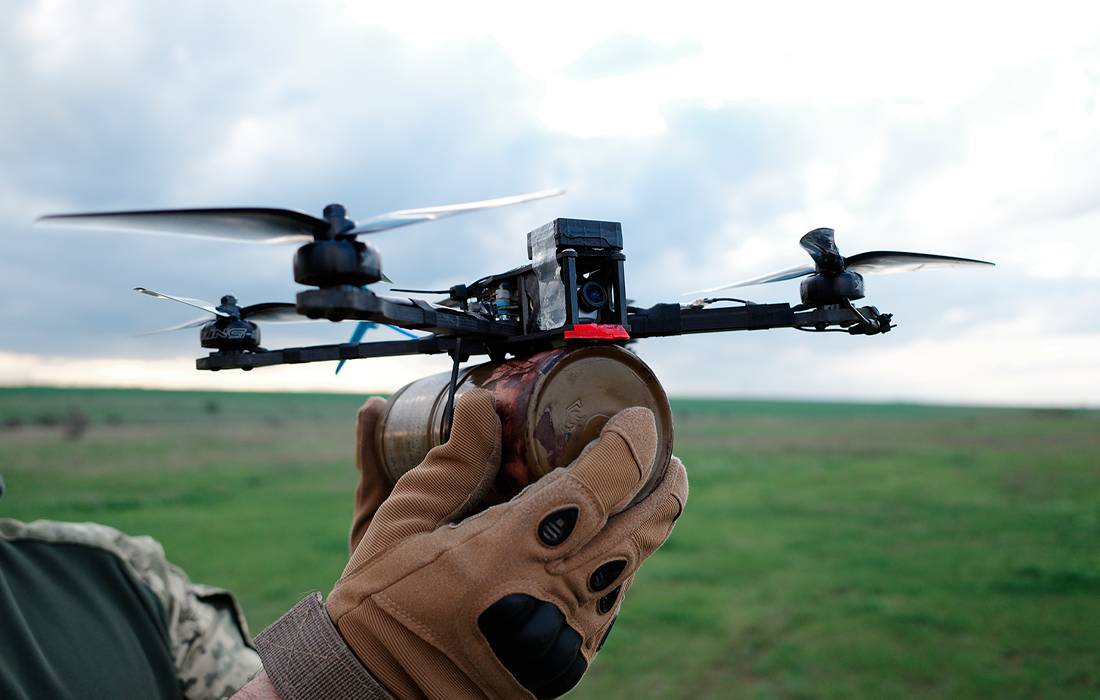In this post, we dive deep into the controversy surrounding iFlight and their Chimera 7 drones. A recent video showing hundreds of these FPV drones in a Russian military warehouse has sparked heated debates within the FPV community. We'll explore iFlight's response, analyse the video footage, and ponder the ethical implications for FPV pilots and manufacturers.

Analyzing the Video Footage
Breaking Down the Video
The video in question shows a warehouse filled with what appear to be iFlight Chimera 7 drones. The shaky footage and blurry resolution make it difficult to estimate the exact number of drones. However, based on the drone arrangement in rows and columns, we can guess at a staggering count of approximately 1,500 drones.

This number is derived from a careful estimation of the rows and columns visible in the video, which is around 20 by 30. In other top-down shots, a conservative estimate suggests there are at least 400 drones in view.
Identifying the Drones
The drones in the warehouse are identified as the iFlight Chimera 7, an older model recognizable by its specific Crossfire antenna mount. This model is outdated, having been replaced by newer versions with a horizontal-style antenna mount. The presence of DJI goggles on a soldier in the video suggests that these drones were intended to be equipped with the DJI video system. However, due to the video's low resolution, it's impossible to confirm this or identify the video transmitter on the drones.

The Plausibility of the Video
Considering the Authenticity
In an era rife with misinformation and deepfakes, the first question that arises is: Is the video even real? Given the vast number of drones displayed, it's reasonable to ask whether it's plausible to amass such a quantity of iFlight Chimera 7 drones in one place.

Examining the Drones
A closer look at the video reveals details that could help answer this question. For example, the drones are not laid out uniformly. There are drones set down facing backwards, drones put down crooked, and no repeating patterns in the positioning of the Crossfire antennas or the propellers. These details suggest that the video is not a result of visual effects trickery and that the drones are, indeed, real.
‼️🇷🇺 Thousands of FPV kamikaze drones delivered to Russian troops
— Zlatti71 (@djuric_zlatko) June 1, 2023
The first batches of FPV kamikaze drones assembled as part of the VOZmezdia Swarm project have been delivered to units of the Southern Group of the Russian Army. Thousands of quadcopters, as well as specially… pic.twitter.com/s3N1Mkpz6n
Sourcing the Drones
How Did They Get There?
The big question that remains unanswered is how these drones ended up in a Russian military warehouse. There's speculation that iFlight sold the drones to Russia, but this seems unlikely for several reasons. Firstly, manufacturing such a large number of outdated drones would be an enormous task for iFlight, and it's improbable that they would restart an old production line for this purpose.

Alternative Possibilities
Another possibility is that these drones were backstock found in a warehouse. However, it would be highly unusual for such a large number of outdated drones to remain unsold and stored away. It's more plausible that these drones were sold through a third-party retailer like Banggood or Alibaba.
The Role of iFlight
iFlight's Official Statement
In response to the video, iFlight released a statement disavowing the use of their drones for military purposes. They have also emphasized that they do not sell into conflict zones. When attempting to purchase an iFlight drone, buyers are required to provide accurate shipping information, and if the provided location falls within a recognized conflict zone, the company will refuse the sale. Furthermore, iFlight has strict regulations in place for their distributors, ensuring they do not sell or provide maintenance services to customers in conflict zones or to those who may modify the products for non-civilian uses.

Despite these preventive measures, iFlight acknowledges that once their products leave their control, they cannot influence their use. This is a challenge faced by many manufacturers in the drone industry. iFlight maintains that it condemns any actions that cause harm using their products and has reiterated its commitment to providing reliable civilian products for users.
As part of its response to this incident, iFlight has initiated an internal investigation. They are also prepared to cooperate with government agencies and international organizations, if necessary, to ensure that their products are not used for illegal or immoral purposes. During this period, iFlight has temporarily suspended operations in conflict zones.
iFlight's Reaction to the Industry's Situation
While iFlight's drones are designed for civilian use, they fall into a larger industry that's grappling with the ways in which its products can be repurposed for military applications. It's a difficult situation for many companies: they have to balance the desire to innovate and provide advanced tools for civilian purposes, such as photography, videography, and hobby flying, with the risk that these tools could be repurposed for military use.
iFlight is undoubtedly aware of the changes in drone usage worldwide. The rise of combat drones, the usage of drones in conflict zones by various countries and non-state groups, and the growing complexity of defending against drone strikes are likely factors that the company has considered.

It is a challenging environment, but iFlight's statement shows its commitment to responsible practices. As a leader in the drone manufacturing industry, the steps it takes may influence how other companies address these issues in the future. It's a complex situation, and the drone industry will need to continue evolving its practices to meet these challenges while ensuring that its products are used responsibly.
Navigating the Skies and Ethical Dilemmas
As we've seen, the use of FPV drones in conflict zones is rapidly evolving and transforming the dynamics of warfare. But what does this mean for us, the community of FPV pilots and enthusiasts?

One of the companies at the heart of this conversation is iFlight. As a recognized leader in the FPV drone industry, iFlight has a significant influence on how the technology evolves. However, the company's decision to supply drone parts to the Ukrainian military has sparked a heated debate within the community.
Some argue that this move is a necessary step in leveraging our technology for a just cause. They believe that iFlight's actions can serve as an effective countermeasure to hostile forces and potentially save lives.
Others, however, worry about the potential repercussions. They fear that this decision could accelerate the weaponization of FPV technology and lead to a potential arms race, which could have far-reaching implications for the civilian drone community. They also express concern about the risk of these technologies falling into the wrong hands, such as terrorist organizations.
There's no easy answer to this dilemma. As FPV pilots and enthusiasts, we must carefully consider the implications of our hobby's crossover into the realm of military warfare. Are we comfortable with our tools of leisure and exploration being used in this way? How do we feel about the potential for increased regulation and scrutiny as a result of these developments?
At this point, it's up to each of us individually to decide where we stand on iFlight's involvement in the conflict and, more broadly, on the use of our beloved FPV drones in warfare.
We encourage you, our readers, to share your thoughts and opinions on this complex issue. Whether you support iFlight's decision or not, your voice matters. Let's have a constructive and respectful conversation about this topic that affects us all so deeply.
Please leave your comments below and let's continue the discussion.







